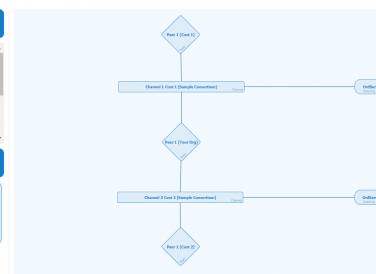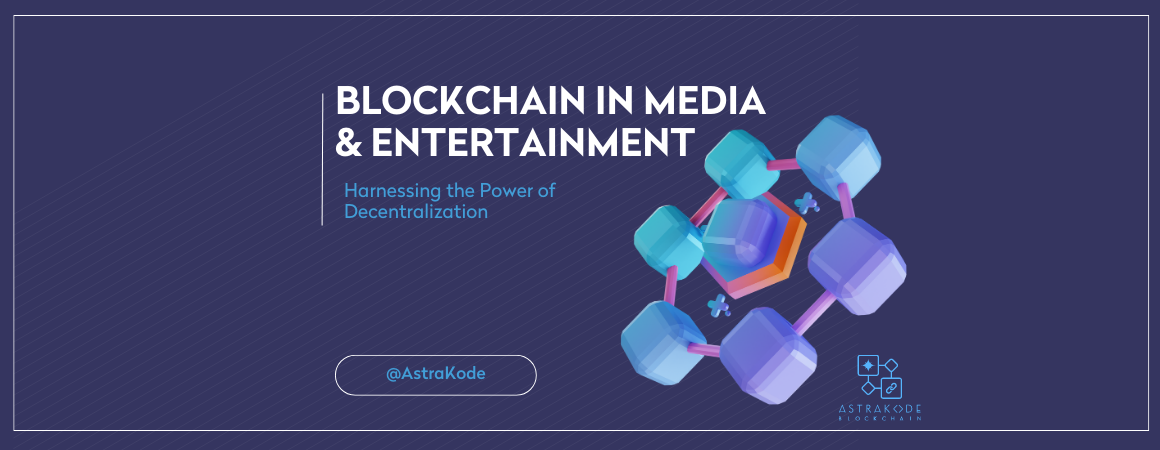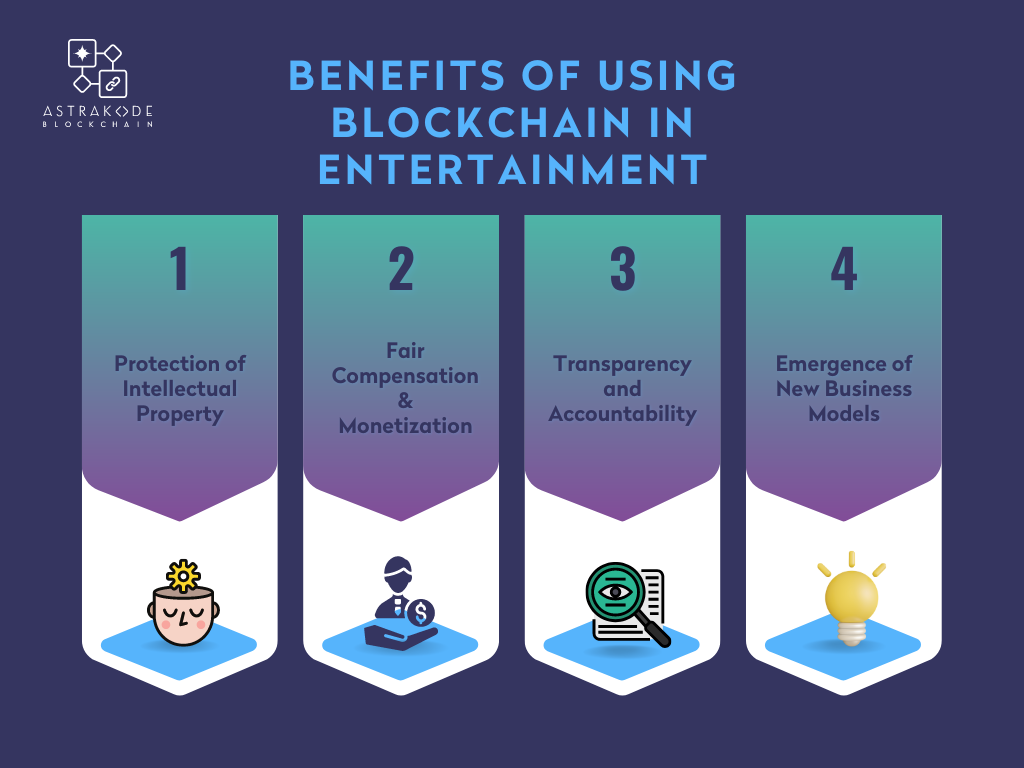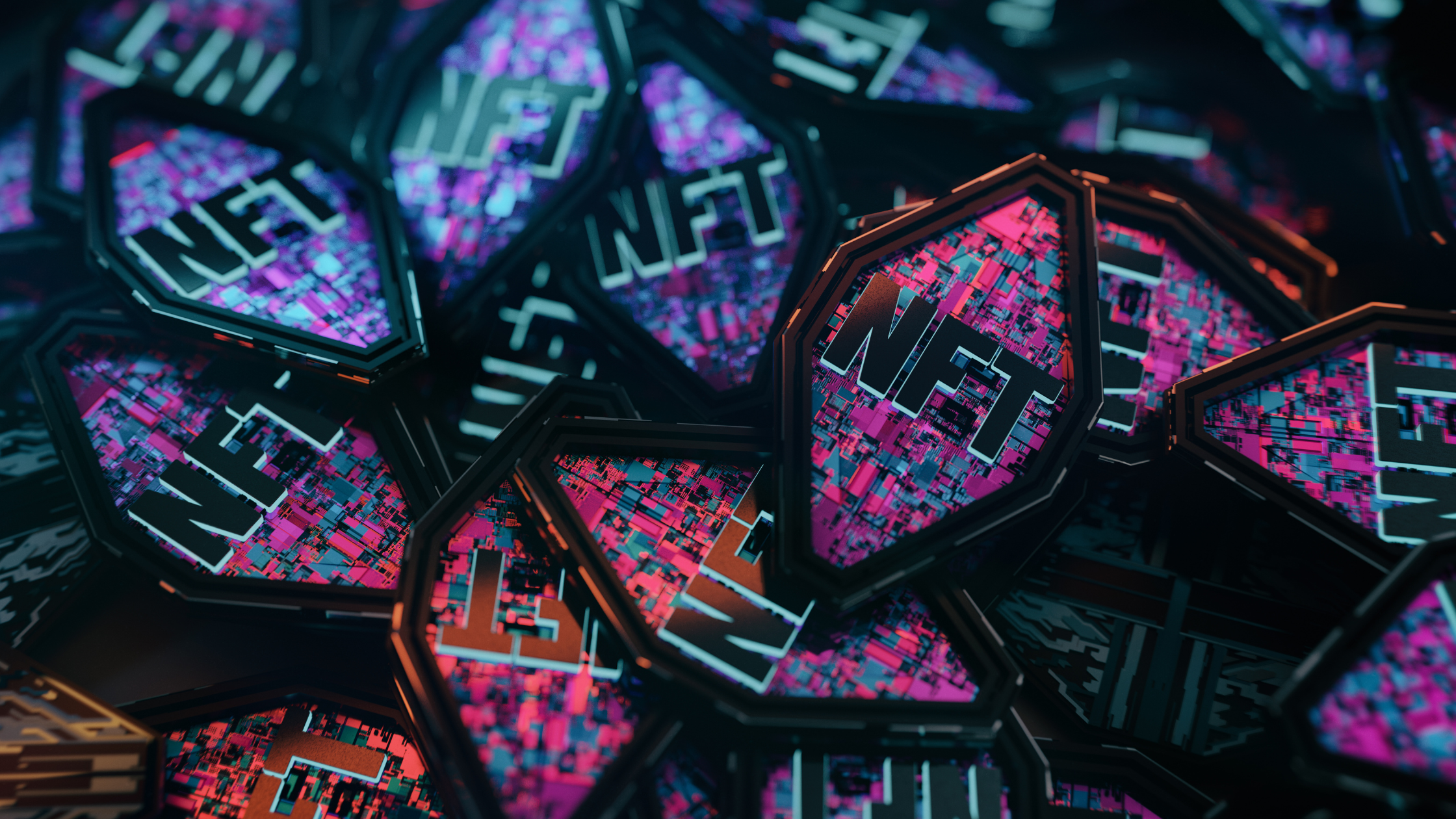
AKB use case: building a blockchain network for document sharing
A few days ago the first demo video of AstraKode Blockchain was published on AstraKode’s YouTube channel. The video showcases…

Blockchain technology is transforming media and entertainment by reducing piracy, increasing transparency, connecting artists directly with fans, and verifying scarcity of digital collectibles. Within this landscape, blockchain technology stands out as a game-changing factor. As the entertainment and media industry continues its digital transformation, many are beginning to realize the potential of blockchain technology to reshape the way content is created, distributed, and consumed.
At its core, blockchain’s strength lies in its immutable and transparent characteristics. This not only enhances security, fostering more trust in the media but also catalyzes a more direct interaction between creators and consumers. The blockchain solution in the media and entertainment sector is presenting innovative blockchain use cases that tackle longstanding challenges such as copyright infringement and piracy in the media.
One of the most lauded use case in the entertainment companies space is its potential to revolutionize royalty payments. Smart contracts automate and streamline these payments, ensuring artists, musicians, and other content creators get their due without significant chunks of their profits being taken by intermediaries. This real-time revenue distribution creates new revenue streams, ensuring every artist, whether they’re on Apple Music or independent platforms, receives their rightful earnings.
Blockchain in the media also has a transformative effect on the consumer’s end. It’s not just about listening to music or watching a movie anymore; it’s about immersive experiences. The value of blockchain extends to the creation and trading of digital assets, such as NFTs (non-fungible tokens), enabling fans to own unique digital items directly tied to their favorite artists or films. These blockchain-based marketplaces allow users to interact without costly intermediaries, making transactions smoother and more direct.
Furthermore, with blockchain adoption on the rise, there’s a growing wave of entertainment companies exploring blockchain applications to provide interactive and web3-enabled content. This means audiences can have a personalized and interactive experience, going beyond being mere spectators. They could, for example, participate in virtual concerts, engage in real-time with storylines, or even influence the outcome of live events.
Historically, the entertainment industry has been heavily centralized, with power and profits concentrated in studios, labels, publishers and other intermediaries. However, the emergence of blockchain technology presents opportunities to decentralize many aspects of how entertainment content is created, funded, distributed and monetized.
One major benefit of blockchain is enabling direct connections between artists and their fans or consumers, facilitated by smart contracts that can automatically enforce fair terms and facilitate micropayments. For example, a music streaming platform built on blockchain could allow listeners to directly compensate artists through transparent royalty payments encoded in smart contracts.
Related to this, blockchain-based non-fungible tokens (NFTs) provide artists provable ownership of their unique digital creations, from music tracks to digital artworks. Creators can sell limited edition NFTs directly to collectors without needing galleries or agents.
Decentralized applications (dApps) built on blockchain expand possibilities for fan engagement and experiences with more transparent and equitable incentives. Artists and entertainers can reward superfans, offer exclusive content, or enable new modes of contribution through token-based participation.
On the financing side, blockchain opens up new fractionalized funding models, allowing fans to invest in entertainment projects via tokenized crowdfunding campaigns. Distribution of returns and tracking of contributions is automated and transparent on the blockchain ledger.
The shift towards decentralization holds promise for disrupting the traditionally opaque and intermediary-heavy entertainment industry. By enabling direct creator-audience interaction, blockchain helps democratize participation, moving control away from centralized legacy platforms. The future may be one of borderless, peer-to-peer collaboration where artists flourish with support directly from their communities.
The media and entertainment industries are undergoing a seismic shift as they recognize the immense potential of blockchain technology. But how exactly can this disruptive technology revolutionize these sectors? Let’s dive into the unparalleled benefits it brings.

At its core, blockchain in media and entertainment functions as a decentralized and immutable ledger, keeping a transparent record of transactions. This unique feature of blockchain offers an array of advantages, especially for content creators and consumers.
The media and entertainment sectors are only scratching the surface of what’s possible with blockchain technology. From the creation of content to its distribution and monetization, every step of the supply chain stands to gain from its adoption. As we witness this digital transformation, it’s clear that the future is decentralized, offering a level playing field for all stakeholders involved.
Imagine a world where your favorite musicians and artists can directly share their masterpieces with you, without having to go through big companies. This is now possible thanks to the media and entertainment industries tapping into blockchain technology.
Blockchain-based platforms are like online stages where artists can display and even sell their work. Just like how Bitcoin changed the way we think about money, these platforms are reshaping how we view art and music. They use the potential of blockchain technology to give artists a direct line to us, the audience. This means no more middlemen or big companies taking big chunks of their profits.
One shining star in this digital revolution is Audius. Think of it as a new-age radio station where you can listen to music. But here’s the twist: it’s a decentralized music streaming service built on blockchain. Instead of artists having to go through record labels or platforms like Apple Music, Audius lets them share their tunes directly with us. Every time you jam to a song on Audius, the artist gets a fairer portion of the money, thanks to the blockchain’s power to handle royalty payments efficiently.
Then there’s OpenSea, the largest NFT marketplace currently. It’s a blockchain-based bazaar where creators can sell a broad category of NFTs including digital art, music, videos, domain names, virtual lands, trading cards, and more. These aren’t just regular files; they are NFTs or non-fungible tokens. What makes them special is that each one is unique, like a one-of-a-kind baseball card. On OpenSea, artists have the freedom to create and price their own NFTs across this wide range of digital assets. Fans can then buy them, knowing that they own a unique NFT whether it’s a piece of digital art, music, video, virtual land parcel or trading card. This is blockchain in the media at its finest!
But why are these blockchain platforms so cool? It’s because they decentralize the process. Think of decentralizing as breaking up a big group into smaller teams. So instead of one big company controlling everything, many small groups or people share the power. This means artists don’t have to share their earnings with big companies, called intermediaries. Instead, they get to keep more of what they earn.
In this digital transformation, platforms like Audius and Opensea are game-changers. They show us how the role of blockchain technology can revolutionize the way artists share and earn from their work. And for us, the fans? We get to support and connect with our favorite artists more directly. It’s a win-win, and it’s only the beginning of blockchain in media and entertainment!
In the vast world of technology, blockchain stands out as a beacon of innovation, especially within media and entertainment industries. A critical component of this blockchain revolution is the NFT, or Non-Fungible Token. But what exactly is it?
An NFT is a unique digital asset secured using blockchain technology. While cryptocurrencies like bitcoin are uniform and interchangeable, NFTs are distinct. Each NFT is one-of-a-kind, much like collectible trading cards, where every card possesses its unique value.

NFTs operate on blockchain technology, a decentralized digital ledger that verifies and records transactions. When you purchase an NFT:
In essence, NFTs utilize the security and transparency of blockchain technology to authenticate, transact, and ensure the originality of digital content.
While blockchain technology offers immense potential for the entertainment industry, it also faces certain challenges and limitations. One major challenge is scalability. Although this issue is being addressed and is expected to be solved, Blockchain networks, such as Ethereum, can experience congestion and high transaction fees during periods of high demand. This can hinder the smooth functioning of blockchain-based platforms, making it difficult for artists and consumers to interact seamlessly.
Another limitation is the lack of mainstream adoption. While blockchain-based platforms have gained traction within niche communities, they have yet to reach mainstream audiences. This can be attributed to factors such as limited user-friendly interfaces, complex onboarding processes, and a lack of awareness among the general public.
Furthermore, the regulatory landscape surrounding blockchain in the entertainment industry is still evolving. Different jurisdictions have varying regulations and laws concerning the use of blockchain technology, which can present legal challenges for artists and creators looking to leverage blockchain platforms.
For artists and creators eager to tap into the digital revolution and harness the potential of blockchain technology in the media and entertainment industries, there’s a growing world of opportunities out there. The role of blockchain technology in these sectors is rapidly evolving, making it an exciting time to be a part of the change.
Yet, as with all technology shifts, there’s a learning curve. Artists shouldn’t feel daunted but rather should embrace the chance to learn how blockchain can help them. Educating oneself about the digital rights management facilitated by blockchain or understanding how tokenization works can empower creators. It’s not about becoming a blockchain developer overnight but getting a basic grasp to better navigate the decentralized landscape.
Want to tap into blockchain without the complex journey? AstraKode has you covered with our low code network composer and smart contract IDE. Sign-up here!
Lastly, immersion is key. Dive into the blockchain community. Attend conferences recently announced, join online forums tailored to blockchain in the media, or participate in webinars that shed light on blockchain applications in entertainment. Building relationships and networking within this burgeoning space can open unprecedented doors. Whether it’s collaborating on a blockchain solution for media content, understanding the value of blockchain in battling piracy in the media, or simply brainstorming new business models, the collective wisdom of the community is invaluable.
As the digital revolution surges forward, the role of blockchain technology in the media and entertainment industries is becoming increasingly significant. Its potential to transform the media and entertainment landscape is both vast and inspiring.
Looking ahead, the value of blockchain in entertainment is undeniable. As blockchain technology continues to mature and the global market recognizes its potential, the anticipation is that there will be a robust wave of blockchain adoption across the sector. The key challenges of scalability that once held blockchain back are now being addressed, paving the way for more expansive blockchain use cases within the media domain.
One noteworthy trend on the horizon is the tokenization of assets. Blockchain platforms have recently announced capabilities allowing artists to tokenize their work, a process that divides a digital asset into multiple tokens. This novel approach introduces fractional ownership and opens up investment opportunities for the masses. This not only brings in a refreshing twist to the conventional monetization models but also empowers fans, investors, and content creators alike. Imagine owning a piece of your favorite artist’s masterpiece or music track, and reaping benefits as its popularity grows!
Furthermore, the convergence of blockchain with emerging technologies like virtual reality (VR) and augmented reality (AR) is a game-changer. Pairing blockchain’s immutable ledger and decentralized nature with the immersive experience of VR and AR can birth entirely new entertainment world. This is especially notable in the gaming world, where blockchain can facilitate secure in-game transactions, verify rare collectible items, and create decentralized gaming platforms that offer players true ownership of their assets. Pairing blockchain’s immutable ledger and decentralized nature with the immersive experience of VR and AR can birth entirely new entertainment worlds. Enthusiasts, gamers and creators can interact without costly intermediaries, ensuring that more revenue streams back to the creators themselves. Blockchain in the media, when combined with VR and AR, has the potential to offer real-time, interactive, and decentralized entertainment experiences that were previously unimaginable.
The media and entertainment industries are increasingly discovering the transformative power of blockchain technology. Through a myriad of blockchain use cases, artists and businesses alike are harnessing decentralized platforms to introduce transparency, eliminate intermediaries, and foster genuine connections between creators and their audience. Here are some illustrative examples:
Audius was founded in 2018 by Roneil Rumburg and Forrest Browning. The platform was launched in beta in 2019 and went live in 2020. Audius has raised over $50 million in funding from investors such as Andreessen Horowitz, Binance, and Katy Perry.
Audius has a number of advantages over the traditional music streaming services. First, it is decentralized, which means that it is not controlled by a central authority. This makes Audius more resistant to censorship and more transparent. Second, artists on Audius can keep 90% of their earnings, compared to the 70% that they typically earn on other streaming services. Third, listeners on Audius can earn rewards for listening to music, which gives them an incentive to support their favorite artists.
Audius has been growing rapidly in recent years. The platform has over 250,000 artists and one million songs on its platform. Audius also reports that its users stream over 100 million songs per day.
Audius is a case study in how blockchain technology can be used to create a more fair and equitable music industry. By giving artists more control over their music and by rewarding listeners for listening to music, Audius is helping to create a more sustainable and equitable music industry.
Here are some of the challenges that Audius faces:
Despite these challenges, Audius has the potential to disrupt the music streaming industry. With its focus on artist empowerment and its decentralized model, Audius could become a major player in the years to come.
Livepeer, was founded in 2017 by Doug Petkanics and Eric Tang. Livepeer on the other hand, represents the digital transformation of video content in the entertainment world. This blockchain-based platform has etched its name as a disruptor in the media and entertainment sector. Instead of creators grappling with content aggregators or centralized platforms that often eat into large chunks of their profits, Livepeer offers a decentralized alternative.
Blockchain technology provides Livepeer with the ability to deliver video transcoding and streaming services at a fraction of the current costs. Its decentralized nature means that video creators no longer need to sacrifice quality or control when streaming their content. In a world driven by digital media, such a blockchain solution eliminates the need for costly intermediaries, thus allowing creators and consumers to interact directly.
Additionally, with the introduction of smart contracts to ensure that terms are adhered to and blockchain’s immutable ledger for transparent record-keeping, Livepeer stands as a testament to how blockchain in media and entertainment can revolutionize existing business models.
Here’s how it works:
The benefit? Additional to the decentralization, you may see fewer ads, less data collection, and new innovative video apps. Without expensive processing, video streaming can be simpler and better.
In recent years, the media and entertainment industries have been on the cusp of a digital revolution. As we navigate this transformative landscape, blockchain’s role in media and entertainment cannot be understated. The blockchain technology stands out as a beacon of hope, promising to usher in a new age of transparency, fairness, and innovation.
Blockchain’s intrinsic properties promise enhanced security, paving the way for trust in the media. The decentralized nature of these systems works to eliminate intermediaries, ensuring artists and content creators receive their due royalty payments promptly and fairly. This blockchain solution is precisely what the media industry has been waiting for, especially when royalty disputes and copyright infringement have plagued it for so long.
Smart contracts, an inherent blockchain use case, guarantee that creators are compensated every time their digital content is consumed. This automation brings about a much-needed digital transformation in the media and entertainment sectors, ensuring fairness and transparency. Furthermore, the tokenization aspect of the blockchain platform heralds an era where digital assets, such as songs, movies, or art, can be tokenized as NFTs (non-fungible tokens). This not only allows artists to monetize their work in innovative ways but also provides consumers with unique, personalized ownership of digital media content.
Speaking of innovation, blockchain in the media isn’t just about the monetization of content. It’s about reinventing the wheel. Imagine a world where entertainment companies can track their content in real-time, ensuring no piracy of intellectual property. Or where media companies can leverage blockchain applications to build better, more direct relationships with their audience, bypassing content aggregators and costly middlemen. This vision also paints a picture where advertisers can trust that they’re getting genuine engagements, thanks to the immutable nature of the blockchain ledger.
Moreover, the rise of blockchain-based marketplaces means artists and creators can sell their work directly to consumers. This direct approach not only boosts revenue streams but allows users to interact without costly intermediaries, fostering genuine connections between creators and consumers.
This digital revolution is empowering a new breed of artists, musicians, filmmakers, and more, enabling them to regain chunks of their profits which once went to intermediaries. This paradigm shift also benefits the consumers, providing them with an interactive experience, allowing users to pay artists for their work directly, facilitating micropayments, and even pioneering new business models.
In essence, the blockchain in media and entertainment is more than just a disruptive technology. It’s an embodiment of a movement that seeks to value the contributions of creators, decentralize control, eradicate piracy, and ensure trust and confidence in the media.
So, as we stand at the threshold of this new era, one thing becomes clear – the value of blockchain technology has the potential to redefine the very fabric of the entertainment world. Get ready to experience entertainment like never before, where every artist is appreciated, every piece of content is valued, and every consumer plays an active role in this decentralized landscape. Dive deep into the world of blockchain and let it reshape your understanding of media and entertainment.
Check out more use cases of blockchain!

A few days ago the first demo video of AstraKode Blockchain was published on AstraKode’s YouTube channel. The video showcases…

In today’s fast-paced world, the demand for quick and efficient solutions has never been higher….

Welcome to the exciting world of blockchain! If you’ve ever wondered what this revolutionary technology…